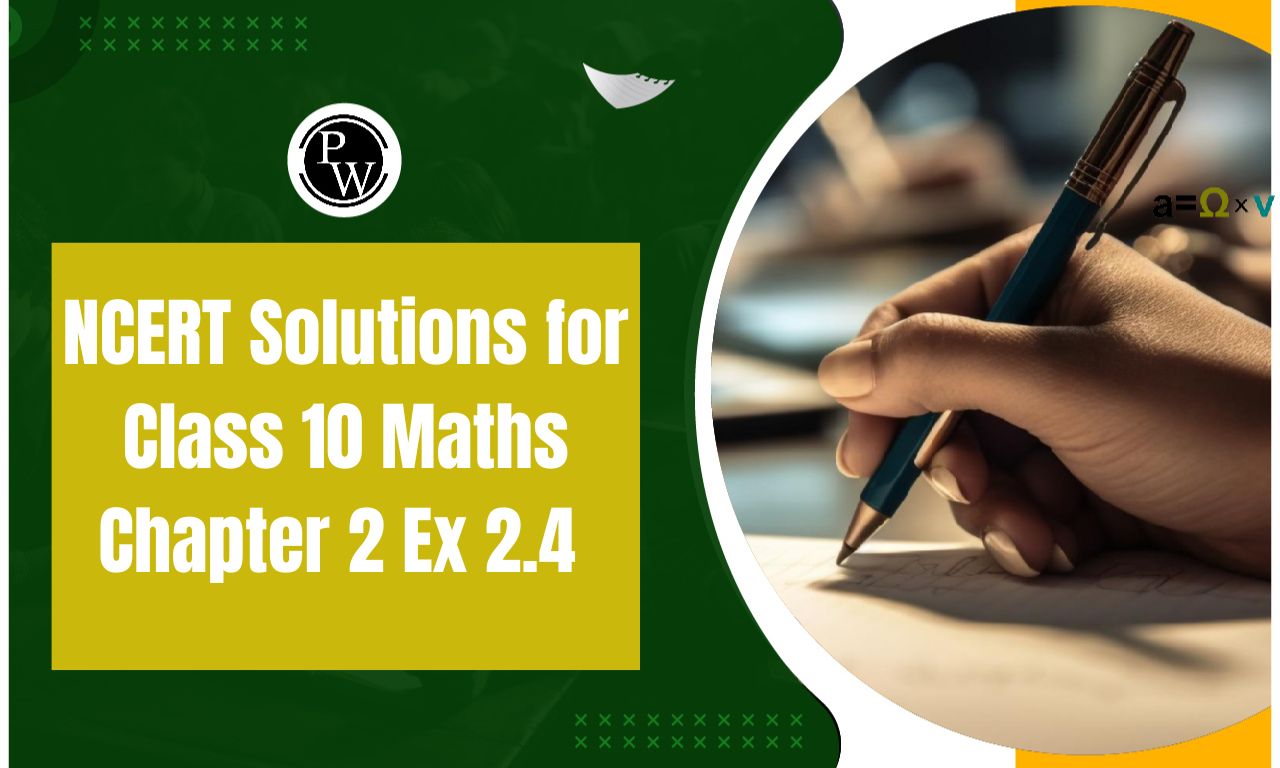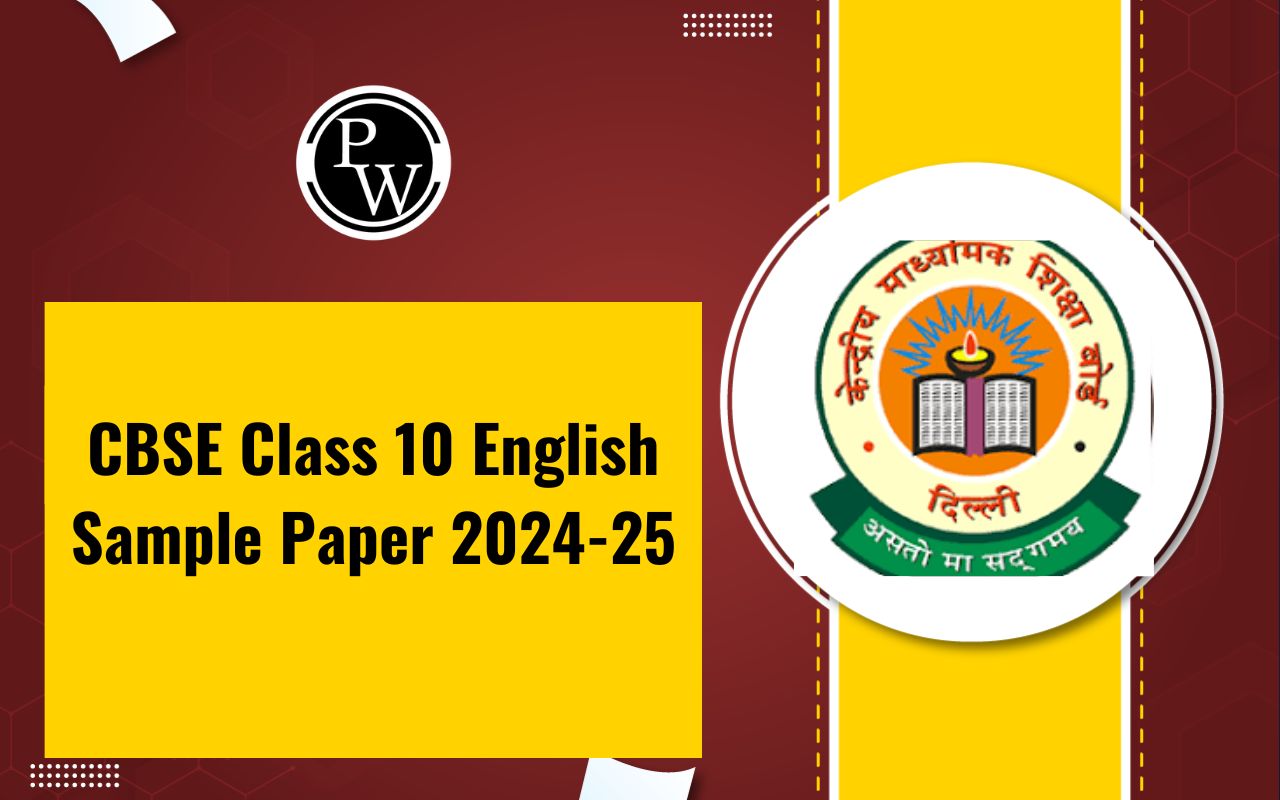

NCERT Solutions for Class 10 Maths Chapter 2 Exercise 2.4: Exercise 2.4 of NCERT Class 10 Maths Chapter 2, Polynomials , focuses on solving quadratic equations by factoring. It guides students to express quadratic polynomials and split the middle term to find its factors. The exercise emphasizes applying the Zero Product Rule to determine the roots of the equations.
Key skills developed include identifying suitable factor pairs, performing algebraic simplifications, and verifying solutions. This exercise is crucial for building a strong foundation in quadratic equations, laying the groundwork for advanced mathematical concepts in higher grades.NCERT Solutions for Class 10 Maths Chapter 2 Exercise 2.4 Overview
NCERT Solutions for Class 10 Maths Chapter 2 Exercise 2.4 PDF
Exercise 2.4 of NCERT Class 10 Maths Chapter 2, Polynomials , focuses on solving quadratic equations through factorization. It is an essential topic for building a strong foundation in algebra and logical reasoning. Below, we have provided a detailed PDF containing step-by-step solutions to all the questions in this exercise. This resource will help students understand the concepts better and practice effectively for exams. Download the PDF for free now!NCERT Solutions for Class 10 Maths Chapter 2 Exercise 2.4 PDF
NCERT Solutions for Class 10 Maths Chapter 2 Exercise 2.4 Polynomials
Below is the NCERT Solutions for Class 10 Maths Chapter 2 Exercise 2.4 Polynomials -1. Verify that the numbers given alongside of the cubic polynomials below are their zeroes. Also verify the relationship between the zeroes and the coefficients in each case:
(i) 2x 3 +x 2 -5x+2; -1/2, 1, -2
Solution:
Given, p(x) = 2x 3 +x 2 -5x+2 And zeroes for p(x) are = 1/2, 1, -2 ∴ p(1/2) = 2(1/2) 3 +(1/2) 2 -5(1/2)+2 = (1/4)+(1/4)-(5/2)+2 = 0 p(1) = 2(1) 3 +(1) 2 -5(1)+2 = 0 p(-2) = 2(-2) 3 +(-2) 2 -5(-2)+2 = 0 Hence, proved 1/2, 1, -2 are the zeroes of 2x 3 +x 2 -5x+2. Now, comparing the given polynomial with the general expression, we get; ∴ ax 3 +bx 2 +cx+d = 2x 3 +x 2 -5x+2 a=2, b=1, c= -5 and d = 2 As we know, if α, β, γ are the zeroes of the cubic polynomial ax 3 +bx 2 +cx+d , then; α +β+γ = –b/a αβ+βγ+γα = c/a α βγ = – d/a. Therefore, putting the values of zeroes of the polynomial, α+β+γ = ½+1+(-2) = -1/2 = –b/a αβ+βγ+γα = (1/2×1)+(1 ×-2)+(-2×1/2) = -5/2 = c/a α β γ = ½×1×(-2) = -2/2 = -d/a Hence, the relationship between the zeroes and the coefficients is satisfied.(ii) x 3 -4x 2 +5x-2 ; 2, 1, 1
Solution:
Given, p(x) = x 3 -4x 2 +5x-2 And zeroes for p(x) are 2,1,1. ∴ p(2)= 2 3 -4(2) 2 +5(2)-2 = 0 p(1) = 1 3 -(4×1 2 )+(5×1)-2 = 0 Hence proved, 2, 1, 1 are the zeroes of x 3 -4x 2 +5x-2 Now, comparing the given polynomial with the general expression, we get; ∴ ax 3 +bx 2 +cx+d = x 3 -4x 2 +5x-2 a = 1, b = -4, c = 5 and d = -2 As we know, if α, β, γ are the zeroes of the cubic polynomial ax 3 +bx 2 +cx+d , then; α + β + γ = –b/a αβ + βγ + γα = c/a α β γ = – d/a. Therefore, putting the values of zeroes of the polynomial, α +β+γ = 2+1+1 = 4 = -(-4)/1 = –b/a αβ+βγ+γα = 2×1+1×1+1×2 = 5 = 5/1= c/a αβγ = 2×1×1 = 2 = -(-2)/1 = -d/a Hence, the relationship between the zeroes and the coefficients is satisfied.2. Find a cubic polynomial with the sum, sum of the product of its zeroes taken two at a time, and the product of its zeroes as 2, –7, –14 respectively.
Solution:
Let us consider the cubic polynomial is ax 3 +bx 2 +cx+d, and the values of the zeroes of the polynomials are α, β, γ. As per the given question, α+β+γ = -b/a = 2/1 αβ +βγ+γα = c/a = -7/1 α βγ = -d/a = -14/1 Thus, from the above three expressions, we get the values of the coefficients of the polynomial. a = 1, b = -2, c = -7, d = 14 Hence, the cubic polynomial is x 3 -2x 2 -7x+143. If the zeroes of the polynomial x 3 -3x 2 +x+1 are a – b, a, a + b, find a and b.
Solution:
We are given the polynomial here, p(x) = x 3 -3x 2 +x+1 And zeroes are given as a – b, a, a + b Now, comparing the given polynomial with the general expression, we get; ∴px 3 +qx 2 +rx+s = x 3 -3x 2 +x+1 p = 1, q = -3, r = 1 and s = 1 Sum of zeroes = a – b + a + a + b -q/p = 3a Putting the values q and p. -(-3)/1 = 3a a=1 Thus, the zeroes are 1-b, 1, 1+b. Now, product of zeroes = 1(1-b)(1+b) -s/p = 1-b 2 -1/1 = 1-b 2 b 2 = 1+1 = 2 b = ±√2 Hence,1-√2, 1 ,1+√2 are the zeroes of x 3 -3x 2 +x+1.| CBSE Class 10 English Sample Paper 2024-25 | CBSE Class 10 Maths Sample Paper 2024-25 |
| CBSE Class 10 Social Science Sample Paper 2024-25 | CBSE Class 10 Science Sample Paper 2024-25 |
4. If two zeroes of the polynomial x 4 -6x 3 -26x 2 +138x-35 are 2 ± √ 3, find other zeroes.
Solution:
Since this is a polynomial equation of degree 4, there will be total of 4 roots. Let f(x) = x 4 -6x 3 -26x 2 +138x-35 Since 2 +√ 3 and 2-√ 3 are zeroes of given polynomial f(x). ∴ [x−(2+√ 3 )] [x−(2-√ 3) ] = 0 (x−2−√ 3 )(x−2+√ 3 ) = 0 After multiplication, we get, x 2 -4x+1, this is a factor of a given polynomial f(x). Now, if we will divide f(x) by g(x), the quotient will also be a factor of f(x), and the remainder will be 0. So, x
4
-6x
3
-26x
2
+138x-35 = (x
2
-4x+1)(x
2
–2x−35)
Now, on further factorizing (x
2
–2x−35) we get,
x
2
–(7−5)x −35
= x
2
– 7x+5x+35 = 0
x(x −7)+5(x−7) = 0
So, x
4
-6x
3
-26x
2
+138x-35 = (x
2
-4x+1)(x
2
–2x−35)
Now, on further factorizing (x
2
–2x−35) we get,
x
2
–(7−5)x −35
= x
2
– 7x+5x+35 = 0
x(x −7)+5(x−7) = 0
(x+5)(x−7) = 0
So, its zeroes are given by: x= −5 and x = 7. Therefore, all four zeroes of the given polynomial equation are 2+√ 3 , 2-√ 3 , −5 and 7. Q.5: If the polynomial x 4 – 6x 3 + 16x 2 – 25x + 10 is divided by another polynomial x 2 – 2x + k, the remainder comes out to be x + a, find k and a. Solution: Let’s divide x 4 – 6x 3 + 16x 2 – 25x + 10 by x 2 – 2x + k. Given that the remainder of the polynomial division is x + a.
(4k – 25 + 16 – 2k)x + [10 – k(8 – k)] = x + a
(2k – 9)x + (10 – 8k + k
2
) = x + a
Comparing the coefficients of the above equation, we get;
2k – 9 = 1
2k = 9 + 1 = 10
k = 10/2 = 5
And
10 – 8k + k
2
= a
10 – 8(5) + (5)
2
= a [since k = 5]
10 – 40 + 25 = a
a = -5
Therefore, k = 5 and a = -5.
Given that the remainder of the polynomial division is x + a.
(4k – 25 + 16 – 2k)x + [10 – k(8 – k)] = x + a
(2k – 9)x + (10 – 8k + k
2
) = x + a
Comparing the coefficients of the above equation, we get;
2k – 9 = 1
2k = 9 + 1 = 10
k = 10/2 = 5
And
10 – 8k + k
2
= a
10 – 8(5) + (5)
2
= a [since k = 5]
10 – 40 + 25 = a
a = -5
Therefore, k = 5 and a = -5.
Benefits of Using NCERT Solutions for Class 10 Maths Chapter 2 Exercise 2.4
Conceptual Clarity : Provides step-by-step explanations to help students understand the method of factorization for quadratic equations.
Exam-Oriented : Solutions are aligned with the NCERT syllabus, ensuring relevance to board exams.
Time Management : Helps students practice efficient methods to solve polynomials quickly and accurately.
Error-Free Solutions : Designed by experts, the solutions minimize the chances of mistakes during practice.
Enhanced Problem-Solving Skills : Regular practice improves analytical and logical thinking, which is useful for competitive exams.
Self-Learning Resource : Acts as a guide for students to learn independently and clarify doubts.
Foundation for Advanced Topics : Prepares students for complex algebraic concepts in higher studies.
NCERT Solutions for Class 10 Maths Chapter 2 Exercise 2.4 FAQs
Is polynomial class 10 easy?
Who invented polynomials?
What is a 4 polynomial called?
What are zeros of a polynomial?












